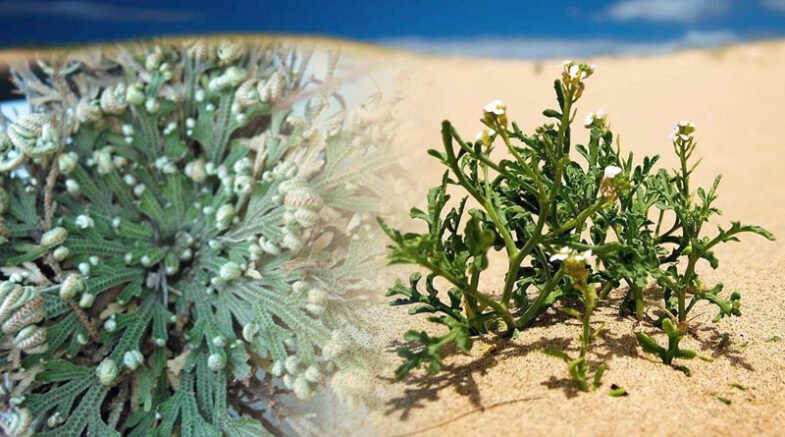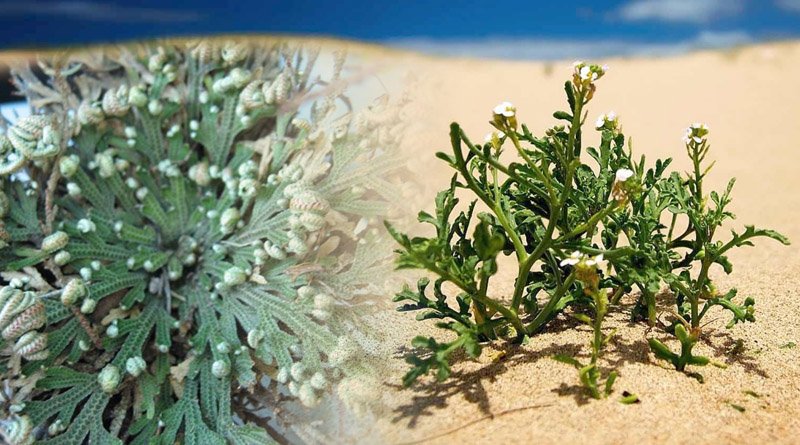The entire genome of Craterostigma plantagineum was examined in the current study by Bartel’s team and researchers from the University of Michigan (USA).

Some resurrection plants can go for months without water before turning green again in a short downpour. This is not caused by a “miracle gene,” as demonstrated by a recent study from the Universities of Michigan and Bonn.
Instead, a vast network of genes—almost all of which are also present in more vulnerable varieties—has led to this ability. Finding the miracle gene that allows for this magic act has become an obsession for many researchers.
It turns out that there are multiple genes that make up the “resurrection” gene. Researchers from the University of Bonn in Germany and the University of Michigan in the United States have discovered the secret behind how one of these resurrection plants, Craterostigma plantagineum, is able to survive months of drought and be revived by just a little bit of water in a new study published in The Plant Journal.
As it turns out, many plant species, including those that don’t even thrive in drought, share the genes that give the resurrection plant its superpower. However, a little water is enough to revive it even after months of drought.
According to Prof. Dr. Dorothea Bartels of the Institute of Molecular Physiology and Biotechnology of Plants (IMBIO) at the University of Bonn, “We have been studying how the plant does this at our institute for many years.”
Her research interests include the genes involved in drought tolerance. It became increasingly obvious that more than one “miracle gene” was not responsible for this ability. Instead, a large number of genes, the majority of which are also present in species that do not respond as well to drought, are at play.
The entire genome of Craterostigma plantagineum was examined in the current study by Bartel’s team and researchers from the University of Michigan (USA).
And it is very intricately constructed: Craterostigma has eight copies of each chromosome, whereas most animals only have two copies—one from the mother and one from the father. Octoploid is another term for a genome that is “eightfold.” Humans, on the other hand, are diploid.
According to Bartels, numerous plants that have evolved in harsh environments have displayed this genetic information multiplication. What gives, though? One possible explanation is that a gene can theoretically be read four times as quickly if it is present in eight copies rather than two.
Therefore, an octoploid genome makes it possible to produce large amounts of a needed protein very quickly. Additionally, it appears that the development of drought tolerance depends on this capability.
Some genes linked to greater drought tolerance are even more replicated in Craterostigma, one of the resurrection plants. These include the so-called ELIPs, or “early light inducible proteins,” which are quickly activated by light and provide protection from oxidative stress. All species that can withstand drought have a lot of them.
Nearly 200 nearly identical ELIP genes, found in large clusters of ten or twenty copies on various chromosomes, are present in Craterostigma, according to Bartels. Therefore, it stands to reason that plants that can withstand droughts can make use of a vast network of genes that they can quickly upregulate.
The same genes, albeit with fewer copies, are typically present in species that are sensitive to drought. This is also unsurprising: Most plants’ seeds and pollen frequently continue to germinate even after extended periods without water. In order to protect against drought, they also have a genetic programme.
However, the botanist explains, “This programme is typically switched off at germination and cannot be activated again afterward.” In contrast, it continues to be active in resurrection plants. Therefore, the vast majority of plants “can do” drought tolerance.
The genes responsible for this ability are most likely to have appeared very early in the process of evolution. However, in species that can withstand drought, these networks are more effective and active throughout the entire life cycle.
The resurrection plant, Craterostigma plantagineum, does not, however, have a uniform “drought programme” in all of its cells. Researchers from the University of Düsseldorf who were also involved in the study were able to demonstrate this.
For instance, during desiccation, different drought network genes are active in roots compared to leaves. This result is not surprising because, for example, leaves need to shield themselves from the sun’s harmful rays. ELIPs, for instance, are helpful to them in this regard. The plant creates photosynthetic pigments that at least partially absorb radiation when it receives enough moisture.
During a drought, this natural defence is largely ineffective. In contrast, roots don’t have to worry about getting sunburned. The study advances knowledge of why some species experience drought so little. Therefore, it might eventually help in the breeding of crops like wheat or corn that can withstand drought better. These are probably going to be more in demand than ever in an era of climate change.
The Heinrich Heine University Düsseldorf and Michigan State University (USA), in addition to the University of Bonn, participated in the study. The German Research Foundation and the US National Science Foundation both provided funding for the project (DFG).
